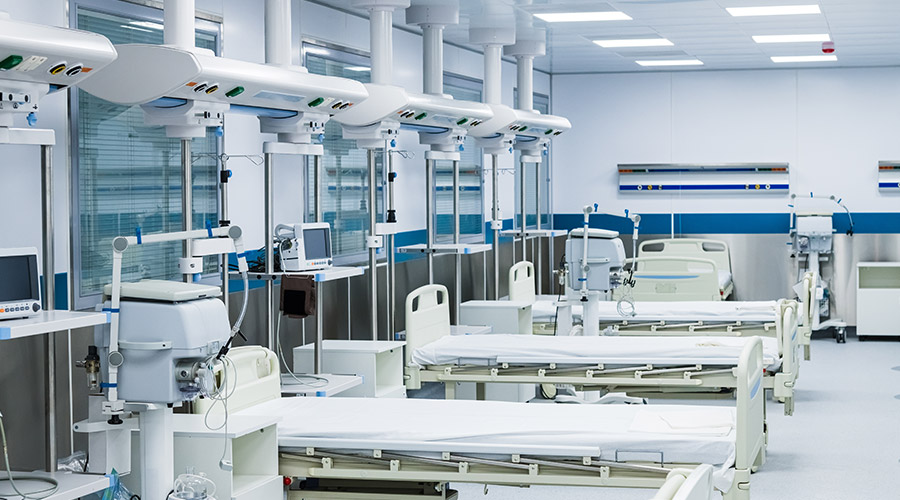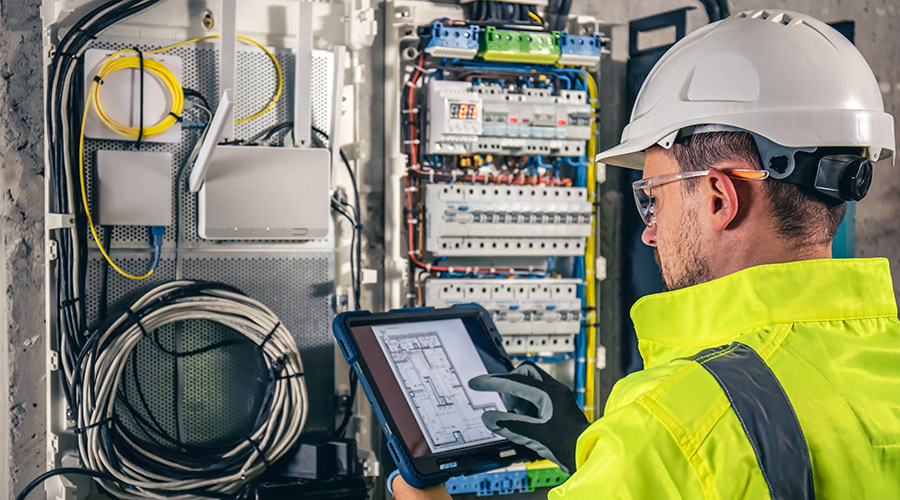As 2016 begins, healthcare facility managers can greatly benefit by looking at key technology trends related to energy for the year ahead, not only to prepare their facilities for years to come but to help them achieve higher levels of energy resiliency, efficiency and self-sufficiency today.
Trend #1 – Cost effective, secure connectivity solutions
In today’s hospitals, it is not uncommon to see one of two situations when it comes to energy related facility investments in building automation or SCADA.
The first situation is best described as “network / system proliferation.” The inevitable byproduct of this approach is that each individual energy asset in your facility has its own underlying network built via a custom system integration, which then feeds a silo system custom built for that particular asset. HVAC systems are connected via Tridium boxes that were custom programmed by a system integrator. Transfer switches are connected via onboard controllers that communicate to hardware-specific user interfaces, etc. Often these independent systems are not linked, not secure, not hardware agnostic, and subject to “stranded asset syndrome,” which occurs when the system integrator who built them is no longer available to support the work.
The second situation we often see is the “no systems” approach. This approach is often the result of a facility manager who realizes it’s not cost effective to deploy individual systems, but faces no better alternative. This situation is inevitably accompanied by “clipboard management syndrome,” where absolutely critical operational data is left for manual recording and tracking. Both of these situations leave facilities with highly ineffective, non-scalable, and/or proprietary approaches to solving their most pressing energy challenges.
Thankfully, there is light at the end of the tunnel, thanks to new cyber-secure, connectivity-driven technology platforms often called “Internet of Things” systems. These new technologies were built from the ground up, with the vision of being equipment agnostic, secure, and easy to deploy and manage. In the smart buildings world, we call these Energy Network of Things™ platforms.
Energy Network of Things platforms allow you to start in the area where your facility needs the most help — ubiquitous network connectivity. They take an open, standards-based approach to connecting existing facility energy assets including meters (water, gas and electric), generators, fuel tanks, automatic transfer switches, chillers, boilers, HVAC control panels and any other intelligent mechanical equipment regardless of make, model, vintage or protocol. These legacy assets are connected into a secure and prescribed energy-controls network, so there is no need to “rip and replace” existing legacy assets in order to achieve energy management goals. With an Energy Network of Things platform, your assets can be securely connected into a centralized SCADA network, monitored easily and maintained against the common causes of stranded assets: loss of communication, sensor failure and out-of-date software.
Leading-edge Energy Network of Things solutions do not stop at connectivity. They are also open to any application and often provide out-of-the-box data visualization, showing trends and alarms. These platforms are perfectly positioned to solve the energy data problem because they enable connectivity first. Look for solutions with ubiquitous connectivity that makes it possible to collect energy management data from virtually anywhere, from any asset, and solutions that integrate with any provider of energy management or building automation software. Combining open asset connectivity with open application interfaces makes these Energy Network of Things platforms a game-changing trend for energy investments.
Trend #2 – Local connectivity will unlock centralized Facility Management
As hospital system consolidation continues, many facility operators and corporate managers are turning to a new operational management trend to connect geographically dispersed facilities — Centralized Facility Management (CFM). CFM provides a holistic view into the energy use, efficiency and resiliency of dispersed operations.
These operations can occupy more than a multisite campus, and can include connecting geographically dispersed buildings in different states, regions or countries. Energy management dashboards or Building Automation Systems alone cannot provide a centralized view of the entire energy management program, because they often suffer from an inability to integrate to the dozens of asset types of systems that may have been deployed at the individual hospital locations. An Energy Network of Things platform unlocks CFM through local connectivity and scales across hundreds of sites in order to provide the most effective energy management solution. In essence, the Energy Network of Things creates a paradigm where the central decision maker is effectively masked from the “chaos” of local assets and systems . This allows a CFM implementation access to and control over local sites, regardless of individual decisions made in these sites over many years.
Capitalizing on ubiquitous connectivity
Once facility assets are connected, there are additional opportunities to achieve operational efficiencies. Emergency Demand Management programs are a great example. Healthcare facilities in markets with these lucrative programs can be paid to enroll and even test their generators. Enrollment is ideal for facilities that want advance notice in order to prepare for an impending grid interruption or failure. In an emergency demand event, the utility sends a signal, which is the precursor to the power outage, and allows you to warm start your generators and benefit your community by stabilizing the grid to avoid an outage. Participants receive a lucrative payment for being on standby, and often receive a second payment based on the amount of energy they curtail during the event. Leading Energy Network of Things solution providers already have relationships in place with Demand Response aggregators, Retail Energy Service Providers and local utilities, so there is very little for your hospital to do other than to identify which generators to enroll.
In conclusion, there is a lot to look forward to in 2016, by enabling connectivity to all energy assets throughout your many facilities. By working with an Energy Network of Things partner that speaks the language of facility management, you’ll have help navigating, and adapting to, whatever the future may hold. They can often be an important bridge between the facility management team and IT departments, in order to get energy management projects off the ground. As you balance the multitude of daily tasks and think about where your organization needs to go in the future, we hope this information can help you safeguard your facility’s future and ensure you leave behind a legacy of innovation in resiliency, efficiency and self-sufficiency.
Tom Willie is the CEO of Blue Pillar.

 3 Employees Injured by Patient at Halifax Infirmary's Emergency Department
3 Employees Injured by Patient at Halifax Infirmary's Emergency Department How Architects Shape the Future of Healthcare Facilities
How Architects Shape the Future of Healthcare Facilities UNC Health, Duke Health Form Partnership for Stand-alone Children's Hospital
UNC Health, Duke Health Form Partnership for Stand-alone Children's Hospital Sarasota Memorial Hospital Plans to Build New Facility in North Port
Sarasota Memorial Hospital Plans to Build New Facility in North Port CMMS, Data and the Path to Compliance
CMMS, Data and the Path to Compliance